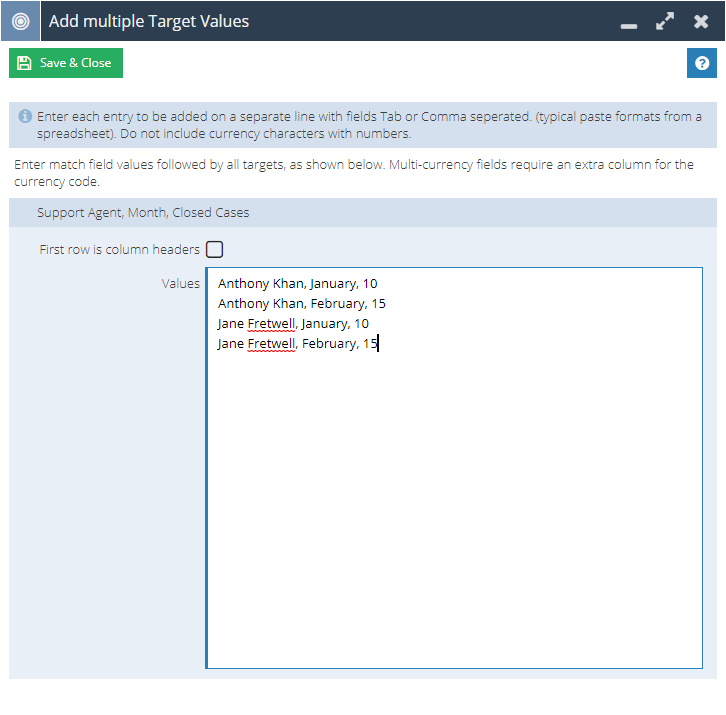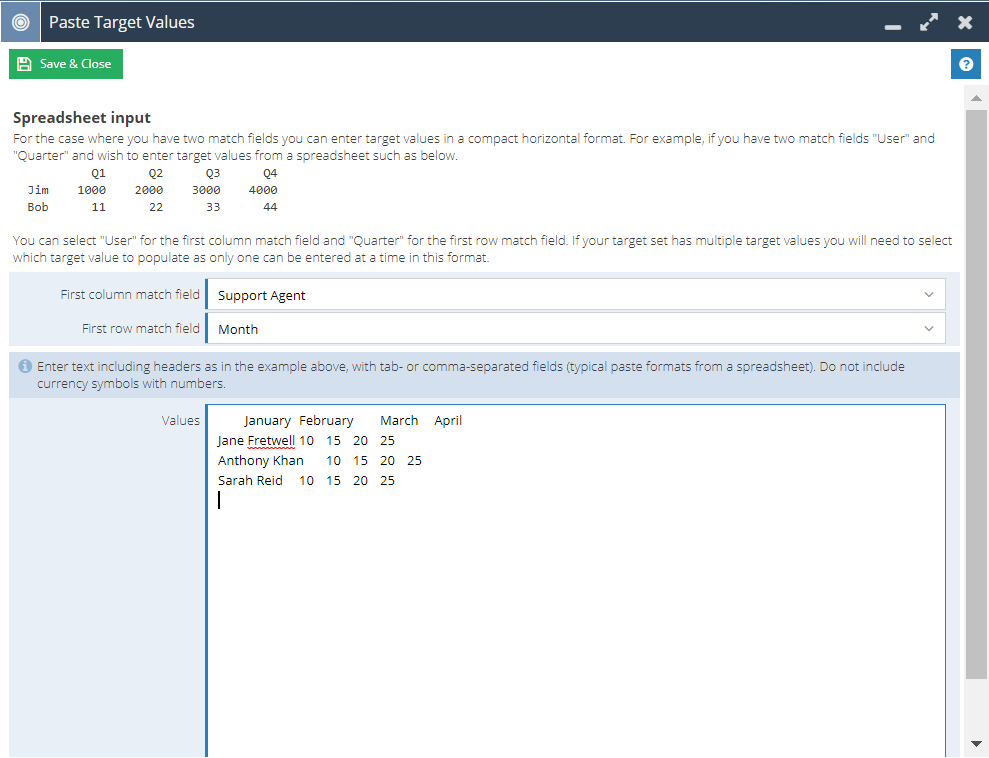Knowledgebase articles
- Welcome to the Knowledge Base
- Introduction
- Training
- Getting Started
- Preferences
- Activities
- Cases
- Importing Data
- Leads
- Marketing
- Introduction to Marketing
- Marketing Campaigns
- Mailing Lists
- Products
- Mailshots
- Upload Library
- Templates
- Event Management
- Compliance Records
- Force24
- Spotler Integration
- What is Spotler?
- Navigating your Spotler homepage
- GatorMail
- GatorLeads / Web Insights
- Tracking Code
- Setting up the Plugin
- Viewing Web Insights Data on your Form Layouts
- Domain Names and Online Activities
- Reporting incorrect Leads created through Web Insights
- Reporting on Web Insights data
- Using UTM Values
- Why aren’t Online Activities being created in the database?
- Why is GatorLeads recording online activities in a foreign language?
- GatorSurvey
- GatorWorkflow
- GatorPopup
- Opportunities
- Projects
- Integrations
- Mapping
- Electronic Signing Tools
- Creditsafe Integration
- Zapier
- Introduction to Zapier
- Available Triggers and Actions
- Linking your Workbooks Account to Zapier
- Setting up Zaps
- Posted Invoices to Xero Invoices
- Xero payments to Workbooks Tasks
- New Case to Google Drive folder
- New Case to Basecamp Project
- New Workbooks Case to JIRA Ticket
- Jira Issue to new Case
- 123FormBuilder Form Entry to Case
- Eventbrite Attendee to Sales Lead and Task
- Facebook Ad Leads to Sales Leads
- Wufoo Form Entry to Sales Lead
- Posted Credit Note to Task
- QuickBooks Online
- Survey Monkey responses to Tasks
- Multistep Zaps
- Email Integrations
- Event & Webinar Integration Tools
- GoToWebinar
- ON24
- Microsoft Office
- Outreach
- Installation
- Outreach Authentication
- Sync People to Outreach Prospects
- Sync Organisations to Outreach Accounts
- Sync Workbooks Opportunities to Outreach
- Sync Tasks/Activities from Workbooks to Outreach
- Sync Outreach Sequences to Workbooks
- Sync Outreach Sequence States to Workbooks
- Sync Outreach Sequence Step Numbers to Workbooks
- Sync Prospects/Accounts/Opportunities from Outreach to Workbooks
- Sync Outreach Tasks/Calls/Meetings to Workbooks
- Scribe/Workbooks Connector
- RingCentral
- Auditing
- Comments
- People & Organisations
- Reporting
- Introduction to Reporting
- Using Reports
- Introduction to Charts
- Exporting Reports
- Advanced Reporting
- Report Snapshots
- Dashboards
- Transaction Documents
- Introduction to Transaction Documents
- Displaying & Adding Transaction Documents
- Copying Transaction Documents
- Transaction Documents Fields Help
- Transaction Documents Line Items Help
- Printing & Sending Transaction Documents
- Managing Transaction Document Currencies
- Managing Transaction Document Statuses
- Setting a Blank Default Currency on Transaction Documents
- Credit Notes
- Customer Orders
- Invoices
- Quotations
- Supplier Orders
- Contract Management
- Sagelink
- Introduction to Transaction Documents
- Configuration
- Introduction to System Administration
- Users & Security
- Database
- Accounting
- Email Integrations
- Customisation
- Creating & Modifying Picklists
- Theme
- Record Types
- Creating Custom Fields
- Report-based Custom Fields
- Linked Fields & Reference Fields
- Record Templates
- Form Layouts
- Customising relationships between parties
- Opportunity Stages
- Custom Records
- Sign In Customisation
- Automation
- Contact Support
- Releases & Roadmap
Creating a Target set for Closed Cases per Customer Support Agent
Introduction
This worked example will go through the steps required to create a Target set for your Support Team, giving each member a closed Cases value target per month.
NOTE: In order to follow this example, you will need the View, Create, and Modify Targets Capabilities.
Step 1
Navigate to Start > Reporting > Targets and select New Target Wizard from the Landing Page menu, then choose ‘Create a general target’ and enter a suitable name for your new Target set, e.g. Closed Cases per month.
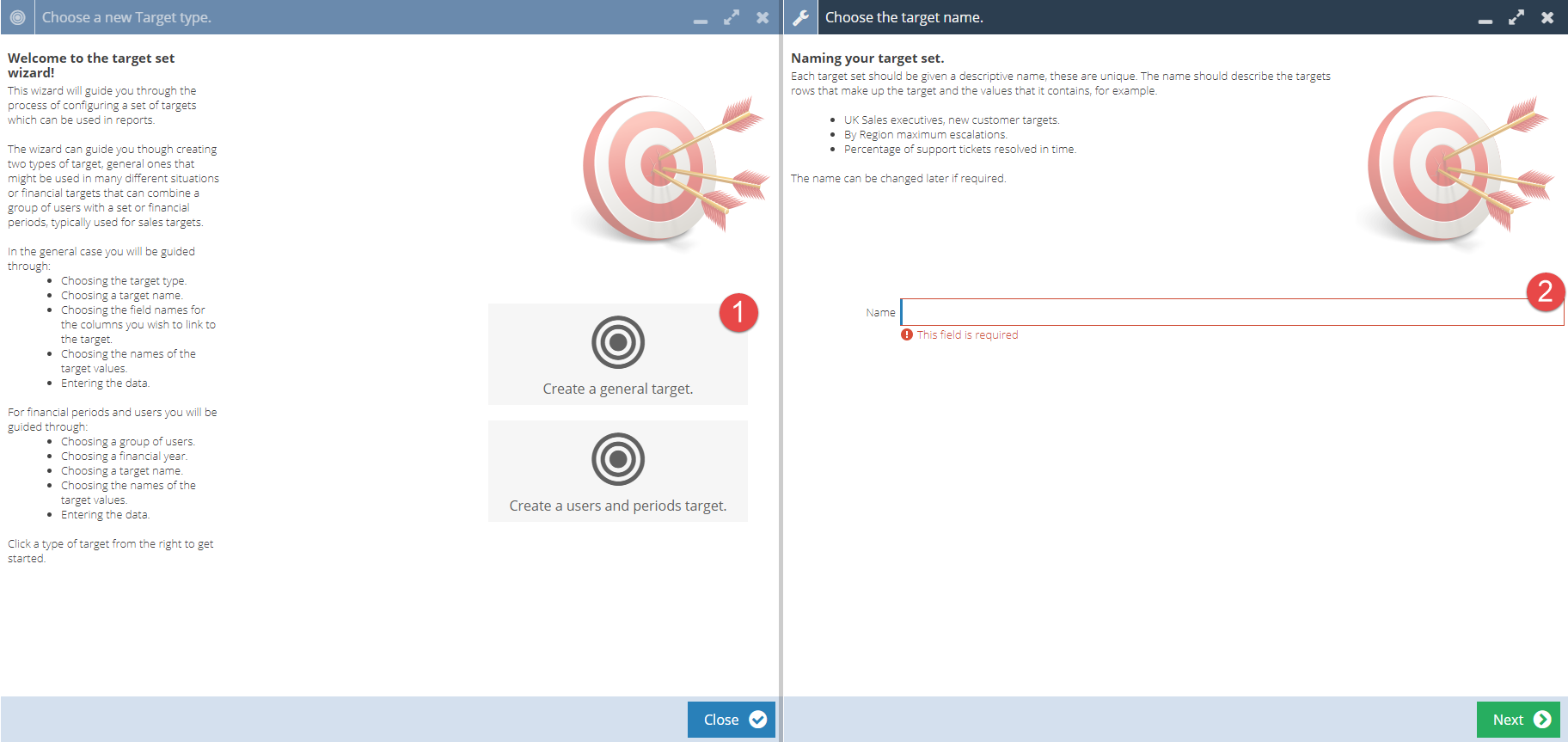
Step 2
This step requires you to identify a number of ‘match fields’ – when doing this, consider what your finished report will look like once the Target set has been applied to it, what will the data be grouped by? What are these targets for?
In this case, we are creating a Target set for your Support Team, giving each member a closed Cases value target per month, so our match fields will be ‘Support Agent’ and ‘Month’.
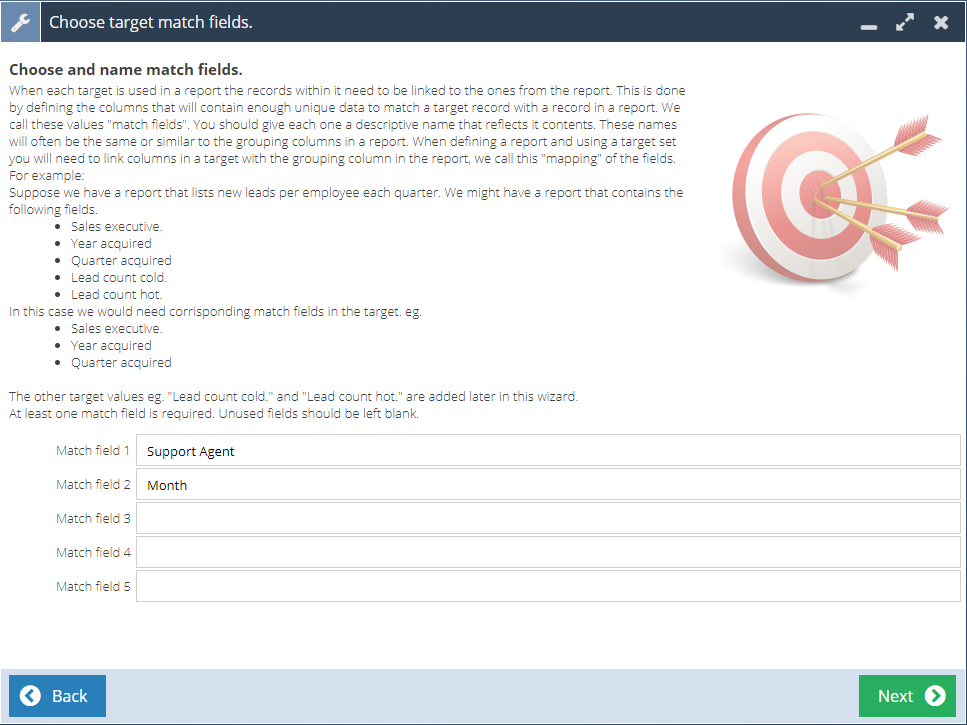
Step 3
Here you must name the Target(s) and assign them a Target type, e.g. is the target financial (£GBP, $USD etc.), or a numerical (number of phone calls answered, cases closed etc.).
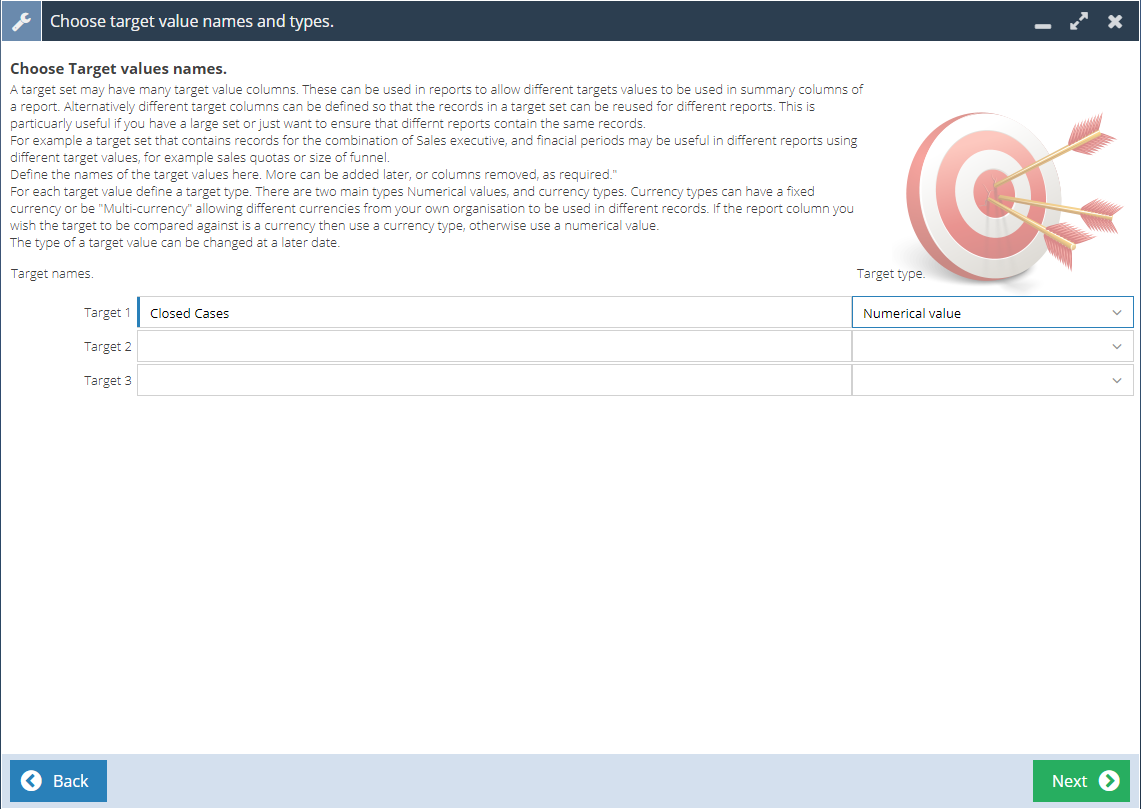
Step 4
Once you have completed the previous steps, you will be presented with the ‘Target values’ view as shown below. From the three options available, you must next populate the values that will be used in your Target set. The next step will cover each of these options in more detail.
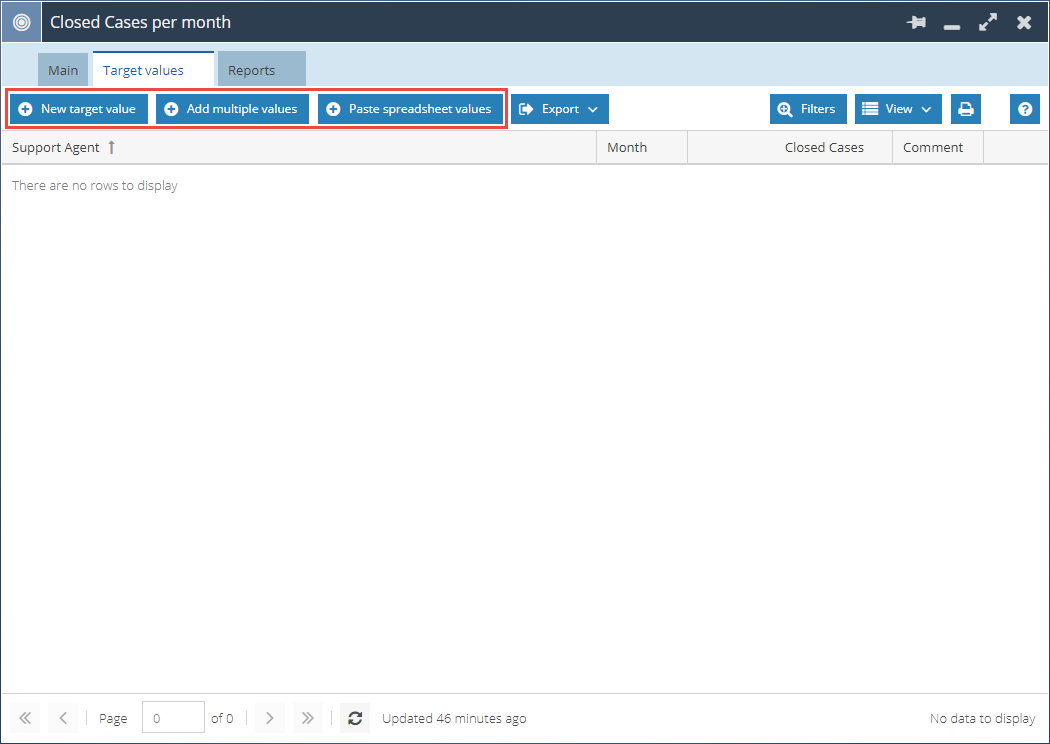
Step 5
A) New target value
This option adds a single Target value, where you can populate each of the previously defined Match Fields and the target that will be applied to them.
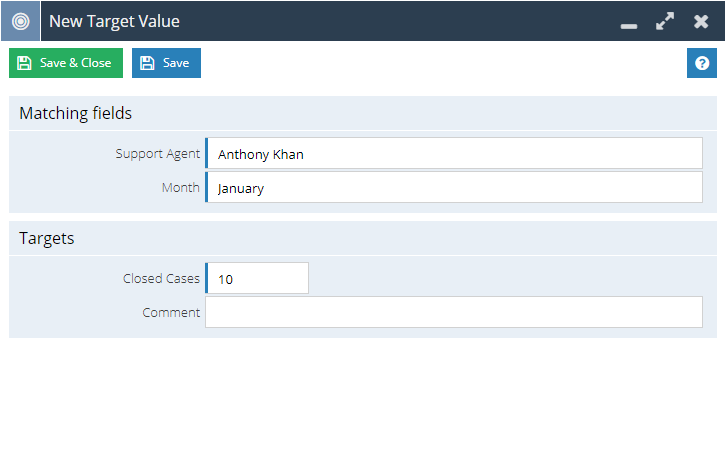
B) Add multiple values
The ‘Add multiple values’ option opens a separate view where you can list each of the matching fields separated by commas, followed by the target value for the corresponding data, and this will then be reflected in your Target set. An example of this can be seen in the screenshot below:
C) Paste spreadsheet values
This option allows you to copy and paste data that is stored in a spreadsheet program such as Microsoft Excel into the below text field, which Workbooks will then use to automatically populate the Target values on the previous view. The screenshot below shows the outcome of copying in a series of data from Excel, which can then be saved and stored in Workbooks as Target values. Column Header: Month, Row Header: Support Agent Name
